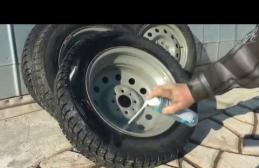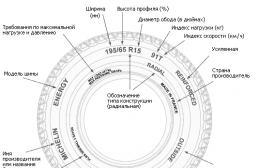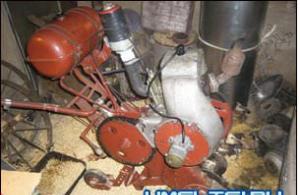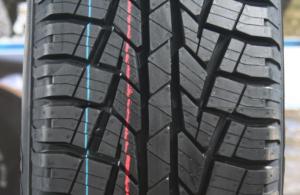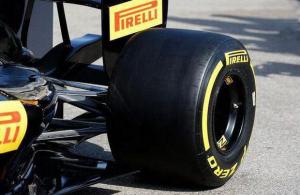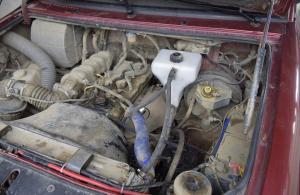What is good electric turbocharging
What is the concept of electric turbocharging, which is increasingly found in latest updates car industry? Let's figure it out. In an effort to make cars as fuel efficient as possible, automakers are increasingly downsizing engines by equipping them with turbocharging technology. Indeed, in order for a compact engine to remain powerful, it is necessary to “help” it by supplying air to the cylinders forcibly, under pressure.
“Shrinking the engine size is one of the main ways to reduce the fuel consumption of a car,” says a spokesman for Valeo, a French supplier of automotive components. “In order for a small engine to develop more power, manufacturers usually use turbines powered by exhaust gases... Unfortunately, however, turbocharged engines are characterized by poor responsiveness at low revs, referred to as "turbo lag effect" or "turbo lag".
This "dip" in the set of revolutions caused by the inertia of the turbine, became the "Achilles heel" of the turbo engines. In part, the problem was solved by using a twin-roll turbine with variable geometry, or using a second small turbine to help the first. In both cases, the turbines operate in a wider range of engine speed, however, it was still not possible to completely eliminate the “turbolag”. Alas, it is very difficult for turbocharged units to provide an instantaneous response to pressing the gas pedal, which is natural for naturally-aspirated engines.
And now he came to the rescue the new kind turbocharging - electric. What is this "beast" and can electric turbocharging "change the rules of the game"?
By studying how electric vehicles work, automakers have found that electric motors are instantly responsive. Today it is still unrealistic for everyone to switch to electric transport. Due to their large size, motors and batteries of electric vehicles are expensive, and the limited mileage of electric cars on a single battery charge will suit not everyone.
But why not use a small electric motor to power the compressor turbocharged engine? After all, then it will be possible to pump air into the engine without the help of exhaust gases! This is precisely the principle of operation of an electric blower.
Idea to use electric turbocharging not new - companies such as Mercedes-Benz, BMW and Ferrari reported on developments in this area several years ago. But, perhaps, more than others interested in the electric supercharger Volkswagen concern- the VW Group is currently investing heavily in the development of electric turbo technology, or electric turbocharging.
Marc Gilles, Technology Communications Development Manager at Volkswagen North America, calls the main benefit of electric turbocharging “that it accelerates at low revs, while conventional exhaust-fueled turbos create the right pressure air at a minimum of 1500 rpm. "
“The electric motor is capable of responding to the accelerator pedal instantly (within 250 milliseconds),” says Valeo, adding that by using electric turbocharging, “fuel consumption can be reduced by 7-20 percent.”
Audi, part of the concern Volkswagen Group, recently demonstrated its recent achievements in the field of electric turbocharging, as exemplified by the Clubsport TT Turbo concept. Four wheel drive car develops a power of 600 hp. and a torque of 649 Nm thanks to the fact that its 2.5-liter five-cylinder engine is equipped with two turbines - traditional and electric.
The electric compressor is powered by a 48-volt subsystem installed in the trunk and, unlike conventional turbine, provides torque “on demand”. All in all, the Clubsport TT Turbo accelerates to 100 km / h in just 3.6 seconds.
“An electrically powered compressor has significant advantages, ”Says Brad Stertz, who deals with power plants in the North American division of Audi. “It spins up to its maximum quickly, without any perceptible delay, and continues to build up air pressure when a traditional turbine lacks exhaust energy.”
“This principle of operation allows us to create traditional turbochargers, specially“ sharpened ”to supply more high pressure and, accordingly, providing more engine power, while the electric compressor will be responsible for instant response and powerful jerks from low revs at any given time, ”adds Sturtz.
Incidentally, the Clubsport TT Turbo concept is not Audi's first attempt at experimenting with an electric supercharger. Last year German manufacturer equipped with an electric compressor 3.0-liter diesel engine by adding it to a traditional turbine. This design was installed on sports coupe RS5. The output is a car that can “change the first hundred” in 4 seconds, while consuming only 5 liters of fuel per 100 kilometers. That is, the electronically supercharged RS5 turned out to be both faster and twice as economical as its “regular” counterpart.
So when should electric turbocharging be expected in broad masses? Next year! According to the manufacturer of the electric blower Valeo, the first production car, which will be implemented new technology, will be the sports SUV Audi SQ7, where the electric turbocharging will receive a V8 diesel engine with a volume of about 4 liters. The power of this power unit is expected to be more than 400 hp, and the acceleration from standstill to 100 km / h is 5.5 seconds. The SQ7 will go on sale in 2016.
Companies such as Volvo, Hyundai, Kia and American manufacturer Honeywell.
So, perhaps, soon electric turbocharging will become the norm, and owners of turbocharged cars will forget about the "turbo lag", enjoying excellent traction almost with idle speed and modest fuel consumption figures.
For more effective work Your his vehicle, car manufacturers often resort to turbocharging systems. But will the new type of turbocharger have such a positive effect on engine performance? To fuel consumption the car has become much smaller, manufacturers often use one key solution - reducing the volume of the power unit. But above all, so that the performance of such engines remains at decent level, usually installed turbochargers that are controlled by the exhaust and have a delay, which is better known as "turbo lag".
Cars with have been exposed to this problem for many years in a row, which was accompanied by constant complaints and discontent from the owners. It seemed that a panacea was found - the simultaneous installation of two turbines, which minimized the effect of the turbo pit. But this, alas, did not become a key decision.
The history of the electric turbine

The electric turbine, after a long time of development, is already ready for mass use. The company was the first to announce this. Controlled Power Technologies (CPT) from Britain. The electric turbocharger, they say, is already ready for mass production... CPT management has already signed an agreement with Switched Reluctance Drives Limited to develop an OEM module based on this technology base.
Switched Reluctance Drives will handle serial production electric compressors. British developers, meanwhile, have already succeeded in creating real electric compressors for motors. internal combustion... The CPT turbocharger will be installed on any engine: naturally aspirated, turbocharged diesel or gasoline.
Controlled Power Technologies has been developing the electric turbine for nearly eight years, starting in the early 21st century. The creators of the electric turbine claim that it can operate from an on-board electrical network with a voltage of 12 volts, and its use will save the engine from the turbo lag effect, and also activate the supercharger even at low speeds. The peculiarity of this technology lies in the use of regenerative energy. The back pressure, which was previously released through the blow off bypass valve when the accelerator was released, is now directed to the rotation of the flywheel turbine blades, which allows energy to be generated and to charge the battery.
Car prototype with electric turbine has developed German company AVL List. The electric supercharger has been adapted to the two-liter gasoline engine with direct fuel injection... Such power unit which was installed on the Vokswagen Passat, polluting the atmosphere very delicately, so to speak, only 159 grams per kilometer, which is as much as 20 percent less than a similar traditional 2.0 TFSI with the same power, and less than a 170 -powerful turbodiesel with the same volume.
 The developers claim that this technology helps automotive manufacturers invest in established environmental standards, which came into force this year. Controlled Power Technologies has created a starter generator SpeedStart with a belt drive, which is used to operate the Start \ Stop system, which turns off the engine at short stops, which will certainly save money in traffic in the city in traffic jams.
The developers claim that this technology helps automotive manufacturers invest in established environmental standards, which came into force this year. Controlled Power Technologies has created a starter generator SpeedStart with a belt drive, which is used to operate the Start \ Stop system, which turns off the engine at short stops, which will certainly save money in traffic in the city in traffic jams.
But along with researchers from Britain, German developers have created an accessible idea for air injection and, moreover, with minimal cost that has become recognized throughout Europe. Substantially effective way Improving the air injection in the engine is a mini-turbine from KAMANN, which is mounted in the intake system. An electric turbocharger from KAMANN is a miniature turbine that acts as an electric air injection system installed in engine compartment... This mounting of an electric turbine increases the torque of the motor, in turn contributing to a decrease in fuel consumption. This improves the quality of the exhaust gases, reducing the carbon dioxide readings and prolonging the catalyst life, which improves the overall speed characteristics car.
The principle of operation of an electric turbine
The principle of operation of an electric turbine differs from a classic turbocharger only due to the design of the axle that connects the impellers of the classic. When the turbocharger reaches maximum speed, the controller includes Electrical engine in generator mode. This prevents the peak engine speed from being exceeded. In cases of too rare a decrease in speed, the coupling connections allow the impellers to rotate independently of each other, in turn reducing the load on the bearings.
Pros and cons of an electric turbine
The more power, the less exhaust
 Many conventional engines combustion engines are equipped with turbines in order to get more power and better acceleration. They spend less fuel and therefore pollute the atmosphere exhaust gases also much less in comparison with similar units without a compressor and a supercharger. All this, of course, makes an excellent impression in theoretical terms, but practice shows different results. The high torque is often only found in a narrow engine speed range. Often, some turbo diesels can be observed bad indicator acceleration, when the position of the accelerator pedal changes, the motor needs some time to increase the power for the required acceleration. This phenomenon has already been referred to in this article as a turbo pit. "
Many conventional engines combustion engines are equipped with turbines in order to get more power and better acceleration. They spend less fuel and therefore pollute the atmosphere exhaust gases also much less in comparison with similar units without a compressor and a supercharger. All this, of course, makes an excellent impression in theoretical terms, but practice shows different results. The high torque is often only found in a narrow engine speed range. Often, some turbo diesels can be observed bad indicator acceleration, when the position of the accelerator pedal changes, the motor needs some time to increase the power for the required acceleration. This phenomenon has already been referred to in this article as a turbo pit. "
Savings and quick response
After analyzing the market modern cars, KAMANN claims that by 2020 the share of vehicles that will be equipped with electric turbines, will be 50-60% from total off the assembly line cars. They have also developed a device that helps to respond more quickly to changes in the accelerator pedal and at the same time remain economical. These requirements are very difficult to implement in an engine with conventional system turbocharging. Such a turbo system is only effective within a certain range of engine rpm.
The indisputable advantage of electric turbines in efficient air injection throughout the entire engine speed range of the car, even at the time of engine start, because the forced air is already in intake manifold... At the moment of air injection, when the engine starts, the electric turbine instantly responds to pressing the accelerator, even at low speeds. Even pumping air at the moment of gear shifting, you will continuously receive additional energy in order to move and accelerate.
Turbocharger as an addition to the turbo system
 Most turbines only start efficiently at over 3000 rpm, which means that the torque below this figure no longer increases, which does not give your car dynamism, but the engine's power. Therefore, classical turbines are receding into the past. The installation of an electric turbine allows the engine, already at 1200 rpm, immediately after pressing the gas pedal, to get more clean air without spending the necessary energy. At this point, "nomes" jump by 12% in comparison with the classics!
Most turbines only start efficiently at over 3000 rpm, which means that the torque below this figure no longer increases, which does not give your car dynamism, but the engine's power. Therefore, classical turbines are receding into the past. The installation of an electric turbine allows the engine, already at 1200 rpm, immediately after pressing the gas pedal, to get more clean air without spending the necessary energy. At this point, "nomes" jump by 12% in comparison with the classics!
More power equals savings
The main advantage of installing an electric turbine is to provide the engine with continuous and much faster acceleration of the vehicle. Kamann Autosport compared cars with gasoline engine volume 1.4 with an installed electric turbine and a similar car but with a volume of 1.6 and without a turbine. The result was as follows: both cars delivered approximately the same power and torque at the same fuel consumption. Consequently, these two engines are equally powerful, but the first one consumes 10% less fuel! This means that along with the increased power, fuel consumption will not increase at all!
The electric turbine is deprived of all the disadvantages of a conventional turbine, and its size is much smaller. except obvious advantages of course, there are also disadvantages. The electric turbine module, depending on the manufacturer, is rather gluttonous, which requires the installation of additional equipment.
Those who like to cram one part into another know what turbocharging is, that is, we are with you. More recently, there have been electrical options for the turbine and supercharger with mechanical drive(or supercharger). What are the electrical options for these compressors and how do they work?
Before we get into the discussion, let's brush up on our knowledge of how turbines and superchargers work. Essentially, both of these devices increase the density air-fuel mixture, which enters the internal combustion engine, where the mixture is compressed and ignited. The higher the density of the air-fuel mixture, the more powerful the piston stroke and engine operation will be, even without increasing the physical volume of the engine cylinders.
That is why small turbocharged engines are more powerful than their larger counterparts: the engine gains more power from each piston stroke. How can this density be increased? By compressing the incoming air with a blower. If the blower is driven by a belt drive of the engine, it is a mechanically driven blower. If from a turbine that extracts energy from the exhaust gas stream, then this.

The disadvantage of a turbocharger is that it takes a while for the engine to produce enough exhaust gas. This annoying hitch is called a turbo lag. The supercharger does not have such a delay, but the engine also takes time to spin the turbine, which affects its efficiency.
It can be assumed that if an "electrical" function was added to these systems, then these disadvantages will no longer exist. And it will be true.
Actually, I want to talk about three mechanisms: electric mechanical supercharging, electric turbocharging, and the stuff that is sold on the Internet. We immediately get rid of what is offered on the Internet. And what exactly is offered, for example, on eBay, you can see the link.
I must say right away that this is not an option to make your PT. Cruiser yet more powerful. This is a way to attach a useless sump pump or fan from a computer to an air intake for no apparent reason. You won't see any changes anyway. All this stuff that connects to your 12-volt electrical system to run the "compressor" is complete rubbish.
V best case, these technical wonders will connect with a generator to start a useless fan that still won't have enough power to normal compression... On the contrary, you will most likely lose a little power due to the limited discharge air flow. As they say, don't be fooled.
So, real electric mechanical blowers do exist, and in fact, they are the same blowers as the ones we are used to. They also spin the compressor to increase air density, but instead of being belt driven, they are powered by an electric motor.

But the electric motor isn't that 12-volt dummy from eBay. This requires at least a 48-volt system. Compression of air consumes a lot of energy, therefore it is difficult to develop electrical systems.
Most batteries and traditional electrical systems in cars simply won't be able to deliver that amount of power fast enough to run an electric supercharger. For this reason, electric superchargers usually come with high-capacity supercapacitors that can store energy and then release electrical energy very quickly. Such capacitors can also be recharged, such as electrical and hybrid cars according to the regenerative braking principle.

For example, Mazda already uses a supercapacitor in its i-eLoop system. And although this is not an electric supercharger, it is still a fairly large capacitor, which is already being produced and installed in cars. This gives us hope that this technology will soon become ubiquitous.
Electric turbochargers are confusing and make us think they are different from electric superchargers. In fact, there is not much of electric turbocharging in them. These are just small electric superchargers connected to a conventional exhaust gas turbocharger.

Even by definition, a turbocharger draws its energy from the exhaust gases, so the beloved term "electric turbocharger" just doesn't make any sense.
By and large, the main task electric turbocharger- Get rid of the turbo lag and help the conventional turbocharger until the engine speed reaches the point at which the turbine is most efficient. To do this, an electric (which can be located in the same place as a conventional turbocharger or separately, but powered by the same impeller) spins the compressor at the start and at low speeds, and when the exhaust gas volume is sufficient, it transfers the work to a conventional turbocharger.

